Moved Permanently
The document has moved here.
Here is an ongoing list of interstitial books recommended by diverse contributors. These are works that cross the borders between genres, or defy categorization altogether. Different contributors have different ideas about what makes a book interstitial, which is why we have asked them to annotate and sign their recommendations. If you want to share your own recommendations, please let us know!

|
Barker, Pat. The Man Who Wasn't There. (Picador, 2001) Pat Barker is a brilliant writer of compelling, vivid, heart-rending novels, and until recently, I thought she worked only in realism of the finest kind. Then I tracked down and read a copy of The Man Who Wasn't There, a thin book, the least-known of Barker's works. The Man Who Wasn't There has no stars on Amazon.com or co.uk, no reader's reviews. Its editors' reviews on both sites are terse and uninformative. I believe that this novel's obscurity is a result of its interstitiality. In The Man Who Wasn't There you'll continue to find the close attention to the realistic conditions of poverty in England that made Barker famous. Formally the novel oscillates betweens scenes of Colin's life in post-WWII England and the script of Colin's imagined movie about the French Resistance (in which he, of course, stars). That switching back and forth in the format of book would qualify as interstitial as far as I'm concerned, but Barker adds even more to this tightly written novel. Early in the book, Colin finds himself followed by a man all in black. Nobody else seems to see him — almost nobody. Is the man a ghost, a character from Colin's imagined movie, a figure for Colin himself, a fever dream? Can the reader, let alone Colin, disentangle real life from fantasy, the horror of the recent war from the terror of the uncanny? I don't think this book was ignored on its release — a quotation from The Guardian says that "We get a sense of the thinness of the walls — where, indeed, they exist at all — between reality and fantasy, sex and violence, the funny and the decidedly not so." It's a shame this book, so close to and yet so unlike Barker's other brilliant, wrenching novels has lost the attention it should rightfully get. (Veronica Schanoes) |
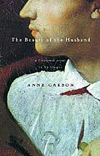
|
Carson, Anne. The Beauty of the Husband: A fictional Essay in 29 Tangos. (Vintage, 2001) An unclassifiable volume of half-narrative, half-essayistic poetry by Anne Carson, a meditation on the Keatsian theme "Beauty is Truth, Truth Beauty" in the context of the story of a woman whose handsome cheatin' husband deceives her throughout their relationship. (Patrick O'Connor) |

|
Knox, Elizabeth. Daylight. (Ballantine Books, 2003) Another exploration of the permeable boundary between the real and the super-real from a writer who seems to be making a career of combining genres in strange and wonderful ways. A spelunker on vacation in Europe helps recover the corpse of a drowned woman who reminds him of a woman he met years earlier who saved him when he got lost in a cave and was then washed away. This merciful gesture embroils him with a devout Catholic priest engaged in researching the life of the Venerable Sr. Martine, with an eye to canonization and a pair of enigmatic twins, one of whom is a vampire. The thing that makes Daylight interstitial is that it raises, and then frustrates, several genre expectations. You begin thinking this is a strictly realistic novel about the legacy of the French Resistance on modern France, about faith and miracles and what it means to be a saint. And so it is. But it's also a vampire novel, with vampires who are not in the least demonic or doomed or anything but very human beings who have contracted a rather unusual blood disease, which seems science fictional, but isn't. Quite. (Delia Sherman) |

|
Miller, Keith. The Book of Flying. (Riverhead Books, 2004) A fabulistic tour de force, akin to the works of Jeff Vandermeer and Italo Calvino, Miller's novel centers around a shy librarian in a world made up of land dwellers and flying people. One day the librarian, Pico, saves a flying girl from drowning, and over a course of several weeks the two fall in love. The girl, though, is unable to fully commit herself to the relationship with Pico because she is of the air and he, the earth. Stumbling upon a tome with directions to a lost city where one can receive wings, Pico sets out on this journey in the hopes that, if he has wings, the girl will fully love him. At this point the book begins an archetypal journey narrative, but in the journey Miller blends various sorts of stories together: fable, anecdote, morality plays, and fairy tales. He blends these various types of stories through a surrealistic medium of language that allows for allegory and symbolism as well as personal, intimate stories to coexist. The book sometimes tumbles and grows cold, though it always recovers. Sometimes the author falls into a precious prose, but overall it is a beautiful art object. The cover is graced with the art of long ignored surrealist painter Remedios Varo, which is a good match, for the tale between the covers is reminiscent of her images and the fantastic worlds she portrayed on canvas. (Christopher Barzak) |

|
Misha. Red Spider, White Web. (Morrigan Publications UK, 1990) (reprinted by Wordcraft of Oregon, 1999) Visceral, unrelenting, and achingly lyrical, Red Spider, White Web is arguably the greatest cyberpunk novel ever written. At the same time, calling this novel "cyberpunk" doesn't quite do it justice. As with any work that transcends categorization, one of the ways it achieves this high level of quality is through unpacking and, when necessary, destroying the very tropes that buoy the more traditional cyberpunk novel. The novel follows a group of artists living in Ded Tek, an anarchic zone outside the colder, cleaner utopia of Mickey-san. This quotation pretty much encapsulates the plot: |

|
Noon, Jeff. Cobralingus. (Codex Books, 2001) A bizarre and intriguing instruction manual for creating bizarre and intriguing fictions (or not), Noon's book is a baffling and lovely conundrum. It has cool artwork, shattered typographic poems, and was generally written/constructed with the confidence of one who has been touched by the madness of language. This book doesn't merely defy readerly expectations, it completely ignores them. For more information on Jeff Noon and his other works, check out this site (Barth Anderson) |

|
Pohl-Weary, Emily, editor. Girls Who Bite Back: Witches, Mutants, Slayers, and Freaks. (Sumach Press, 2004)
This terrific Canadian anthology is both an homage to, and examination/critique of, the kick-ass grrrls and female superheroes that are increasingly evident in popular culture, from mythic heroines to comic book superbabes to Buffy the Vampire Slayer. The book is interdisciplinary and interstitial in construction, featuring essays, memoirs, poetry, art, comics, a scientific report, a fictional online chat, and some great new fiction by Nalo Hopkinson (Brown Girl in the Ring, The Salt Roads); Kij Johnson (The Fox Woman, Fudoki), Larissa Lai (When Fox Was a Thousand, Salt Fish Girl), Hiromi Gotto (The Kappa Child, Chorus of Mushrooms), and other notable Canadian and American authors. "I approached several writers and artists and told them I wanted to create a book I would have loved to read as a teenager and that my friends and I would like to read now," says Pohl-Weary in the book's introduction. "The response was incredible... Some writers decided to critique existing characters and others invented new, better, more interesting superheroes. Regardless of how inspiration presented itself, the consensus among writers and artists was that no one had ever heard of a book like this before. We were going to delve into the paradox and revel in it, through critical and personal essays, fiction, art and hybrid forms." For more information on the book and its contributors, visit the Girls Who Bite Back web site. (Terri Windling) |

|
Richter, Stacey. My Date with Satan. (Scribner, 2000) This collection of short stories originally appeared in 1999, and the stories contained within it are weird and wonderful. Five years later they still feel fresh and crisp. Stacey's Richter's stories explore the disenchanted, disenfranchised, and misanthropic youth culture of the nineties. In these stories you will find sado-masochists who meet online and turn out to be much duller in person, rich girls who appropriate commercial ghetto identities, ghosts hanging out in bars, a boy whose stepmother and father belong to a New Age cult, and high school teachers who buy drugs from their students. The situations are almost always absurdist in nature, but Richter somehow manages to capture a tone which enables her to make us feel for these characters as much as we want to laugh at them or even despise them. Her main trick is the first-person narrative, in which the narrator is in a necessary denial, though is convinced otherwise, and is convincing to the reader as well, for when the truth behind their circumstance is revealed, the reader will often be as shocked as the character. Using pop culture references and stereotypes, Stacey Richter has managed to truly make the stuff of tabloids seem possible. Her idiosyncratic voice allows her to bring together a lot of disparate materials, as well as disparate genre concepts, and meld them into something altogether singular. Several other Richter's stories have appeared in recent years, most notable "The Cavemen in the Hedges" and "Twin Study", published in Zoetrope. Both new stories continue her vision of an off-kilter world, careening towards something apocalyptic, but told in a manner which implies that the end of something is always really a new beginning. Hopefully another collection or a novel will be coming in the near future. This is a writer whose work must be passed around by word of mouth, not only kept alive, but prosperous. (Christopher Barzak) |

|
Thompson, Hunter S. Curse of Lono. (Bantam, 1982) The good doctor has concocted a lengthy career dedicated to fouling up readerly expectations, and nowhere does he do it better than in Curse of Lono. This book might be shelved under Sports (chapters first appeared in Running magazine), Journalism, Creative Non-fiction, and with its high regard for Hawaiian folklore, it certainly deserves to be the centerpiece in discussions of myth's relationship to interstitial fiction.While covering the Hawaii Marathon, Thompson plies his brand of boozy gonzo journalism only to find himself, as usual, covering an entirely different event, one in which local legend claims Thompson as the long-lost Hawaiian god Lono. To this day, Thompson asserts that the events of this novel really happened and that he is Lono. Consequently, this book's interstitiality reaches right across questions of categorization, myth/genre, journalistic integrity, and, like much of Thompson's work, grasps at redefining "truth." (Barth Anderson) |

|
Wexler, Robert Freeman. In Springdale Town. (PS Publishing, 2003) Wexler writes of small-town America with the same regard to detail and unnerving surreality as David Lynch. Just when you think you have a grip on what's happening in Springdale town, its two main characters, and the story's plot, Wexler rearranges the whole game with, I have to say it again, Lynchian instinct. With footnotes inset to give the page an air of scholarly work, In Springdale Town can't be neatly fit into the typical contemporary fantasy molds, since as a metafiction, its audience seems to be dwelling outside typical genre boundaries. (Barth Anderson) |
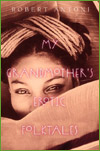
|
Antoni, Robert. My Mother's Erotic Folktales. (Grove Press, 2001) Antoni's collection consists of lusty, lively, interlocking stories set in the Bahamas during World War II, as recounted by a ninety-six-year-old woman to her grandson. The author veers between realism, magical realism, fantasy, fable, and historical fiction. (Terri Windling) |

|
Barry, Lynda. A Hundred! Demons!!! (Sasquatch Books, Seattle, WA, 2002) |

|
Bernheimer, Kate. The Complete Tales of Kezia Gold. (FC2, 2002) Bernheimer's innovative novel uses a fractured, prismatic structure and themes drawn from fairy tales and Jewish folklore to illuminate what could be called a postmodern coming-of-age story. It's moving, memorable, and unique. (Terri Windling) |
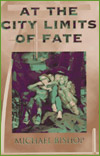
|
Bishop, Michael. At the City Limits of Fate. (Edgewood Press, 1996) |

|
Blaylock, James P. Thirteen Phantasms. (Ace, 2003) This edition collects the short fiction of a marvelous American writer whose work falls somewhere on the continuum between domestic realism, contemporary fantasy (of the Ray Bradbury sort), supernatural horror, and western regional fiction. (Terri Windling) |

|
Bowes, Richard. Minions of the Moon. (Tor, 2000) Drugs, rent boys, dopplegangers, thugs,and a magic carousel in the mean streets of 80's New York City. A work of urban gay magical realism with elements of the thriller and the memoir. Beautifully written, very gritty, very exciting, very moving. (Delia Sherman) |
|
Brockmeier, Kevin. Things That Fall From the Sky. (Vintage, 2003) A lovely strange mixture between the domestic short story, a moment of magic realism as a large rectangle presses down on the earth like a closing door, and a calm sort of Ray Bradbury midwest voice as the inevitable approaches. (Midori Snyder) |
|
|
Budnitz, Judy. If I Told You Once. (Picador, 1999) |
|
|
Butler, Robert Olen. Tabloid Dreams. (Holt, 1997) Butler (winner of the Pulitzer Prize) fashioned the stories of this collection around real headlines from tabloid newspapers, such as "Help Me Find My Spaceman Lover" and "Titanic Victim Speaks Through Waterbed". The stories move easily through many different genres, and range from completely hilarious tales to deeply affecting ones. (Terri Windling) |
|
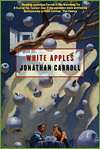
|
Carroll, Jonathan. White Apples. (Tor, 2003) Carroll criss-crosses the borders between mainstream, mystery, and dark fantasy fiction in this story about man returned from death, using this premise to reflect on the nature of death, life, the universe, and everything ... all the while telling a cracking good tale. (Terri Windling) |
|
Carson, Anne. The Autobiography of Red: A Novel in Verse. (Vintage, 1998) |
|
|
Carter, Angela. Nights at the Circus. (Viking, 1986) A Cockney trapeze artiste has wings, or maybe it's all a fraud. A rather staid young journalist sets out to debunk her, and stays to love her. A picaresque historical-comical-fantastical-romantic circus novel that spans two continents and has a train wreck in it, not to mention white tigers. (Delia Sherman) |
|

|
Chabon, Michael. The Amazing Adventures of Kavalier and Clay. (Random House, 2000) Two Jewish immigrant teenage boys in 1930's Brooklyn create a series of successful superhero comix. Chabon dug deep into the actual stories and experiences of the generation of guys who created "Superman" et al — the book addresses why people write comics, gives you an almost edible image of the energy of New York in the 30's, includes a "queer" subplot . . . Josef Kavalier, the artist of the team, studied Houdini-like escapes in Prague, and gets out a step ahead of the Nazis in a box that also contains the Golem . . . what's not to like? (Ellen Kushner) |
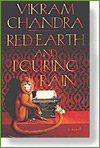
|
Chandra, Vikram. Red Earth and Pouring Rain. (Back Bay Books, 1997) From Publishers Weekly: "Setting 18th and 19th Mogul India against the highways of contemporary America and fusing Indian myth, Hindu gods, magic and mundane reality, this intricate first novel is a magnificent epic that welds the exfoliating storytelling style of A Thousand and One Nights to modernist fictional technique." Need we say more? (Terri Windling) |

|
Chapman, Stepan.The Troika. (Ministry of Whimsy Press, 1997, trade paperback) This mosaic novel in which an old Mexican woman, a talking brontosaurus, and an intelligent jeep are traveling across an endless desert above which shine three suns is a masterpiece of interstitial storytelling. (Jeff VanderMeer) |
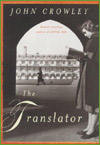
|
Crowley, John. The Translator. (Morrow, 2002) Set on an American campus in the early 1960s, this gorgeous Interstitial novel about love, language, and American/Soviet history can be read as a mainstream "literary" novel, an historical novel, a Cold War thriller, a romance, and/or as contemporary fantasy. (Terri Windling) |
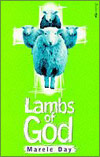
|
Day, Marele.The Lambs of God. (Penguin USA, 1999) This quirky, captivating novel about nuns gone feral, real estate speculators, and selchie legends on an isolated island off the coast of Australia is a book that defies categorization. (Terri Windling) |
|
De Lint, Charles. Someplace to Be Flying. (St. Martins, 1999) De Lint weaves Native and European creation myths, trickster tales and other folklore into a contemporary story set in the fictional city Newford, a place where Coyote walks and Raven broods and Crow Girls flit through the trees. (Terri Windling) |
|

|
Emshwiller, Carol.Carmen Dog. (Mercury House, 1999) Carol Emshwiller presents a universe where stereotypical roles for women are breaking down as the women themselves take on animal traits and the animals become more like women. As the extremes blend, Emshwiller's satire becomes increasingly bizarre and madcap. This is a wild ride where you want to watch out for wolverines. (Gregory Frost) |
|
Erdrich, Louise. The Antelope Wife. (Harper, 1998) Erdrich's extraordinary novel blends contemporary realist fiction with historical fiction, fantasy, myth, and magical realism to explore the power of love and of history, in Native American families and communities past and present.(Terri Windling) |
|

|
Fowler, Karen Joy. Sarah Canary. (Holt, 1991) The book is riveting and strange, full of half-glimpsed supernatural occurrences, as a seemingly mad woman is "returned" to her world by a reluctant Chin Ah Kin, a Chinese railway worker. He is forced to act as her guide, defender and hero, and in the process becomes a magnet for much of what is ugly in us. (Gregory Frost) |
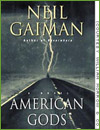
|
Gaiman, Neil. American Gods. (HarperTrophy, 2002) Gaiman zigzags through a number of genres (fantasy, horror, mysteries, thrillers, and the great American road novel, to name just a few) in this a panoramic story about an ex-con on a hero's journey across the U.S. It's an unusual tale exploring modern American life, portraying the old gods who live at the margins of it and the new gods emerging from our restless culture. (Terri Windling) |
|
Garner, Alan. Strandloper. (Harvill Press, 1999) Garner has created his "incantatory" tale out of prose and verse, myth and nursery rhymes, old English history and slang, and the real life story of William Buckley, an 18th century Englishmen transported to Australia who became deeply immersed in Aboriginal life. It's an unusual and remarkable novel. (Terri Windling) |
|
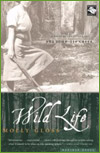
|
Gloss, Molly. Wild Life. (Houghton Mifflin, 2001) Set in the Cascade Mountains of the Pacific Northwest in the early 1900s, this historical/magical/adventure/western/feminist novel tells the story of Charlotte Bridger Drummond - drummfreethinker, single mother of five sons, and writer of women's adventure stories. The narrative, in the form of Drummond's journal entries, paints a vivid portrait of frontier life. (Terri Windling) |

|
Goto, Hiromi. The Kappa Child. (Red Deer College Press, 2001) Inhabiting the interstices between domestic realism, contemporary fantasy, literary horror, and coming-of-age fiction, this remarkable novel is the haunting story of a Japanese-Canadian girl growing up in rural Alberta — a beautifully penned tale wound through with Japanese "kappa" legends. The Kappa Child won the Commonwealth Writers' Prize and the James Tiptree Jr. Award. (Terri Windling) |
|
Goudge, Elizabeth.The Elliots of Damerosehay. (Hodder & Stoughton, 1957; Out of Print) An omnibus edition of three novels about the Elliot family: The Bird in the Tree (1940), The Herb of Grace (1948), and The Heart of the Family (1953). Domestic realism, set in war-time England, melded with romance, meditations on faith, and the distinctly magical influence on the characters of the two houses in which the action unfolds. (Delia Sherman) |
|
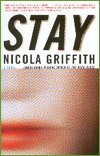
|
Griffith, Nicola. Stay. (Vintage, 2003) Even the publishers didn't know how to categorize this one: the hardcover was marketed as mainstream literary, the paperback as genre crime noir! (Susan B. Westerbook) Dorothy Allison called it "a powerful character study in the rough domain of mystery and adventure." (Ellen Kushner) |
|
Hand, Elizabeth. Bibliomancy. (PS Publishing, 2003) Hand is a perceptive chronicler of life in the late-20th/early-21st centuries, penning stories that ignore genre boundaries to concentrate on character and theme. This volume contains her brutally horrific, award-winning story "Cleopatra Brimstone," along with the bewitching award-nominee "The Last Trumps," the elegiac "Pavanne for a Prince of Air," and Hand's clever Dickensian tale, "Chip Crockett's Christmas Carol". (Terri Windling) |
|
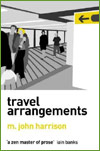
|
M. John, Harrison. Travel Arrangements. (Orion 2000) As the Amazon.co.uk Review says: "The author's previous books have often been labelled as science-fiction or fantasy but the stories gathered here demonstrate the limitations of such categories. Harrison's writing balances disquietingly on the edge of realism and careful descriptions of quotidian life and place, shifting into intimations of worlds of feeling and states of mind briefly glimpsed." (Terri Windling) |

|
Helprin, Mark. Winter's Tale. (Harvest, 1995) A novel of New York City at the turn of the Millennium. But it's not entirely clear which Millennium, and why is everything so Victorian, and what about that mysterious town up the Hudson that you can't always find? Gorgeous prose, prickly, interesting characters, and a wonderful sense of the essence of New York. (Delia Sherman) |
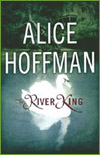 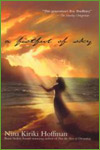
|
Hoffman x 2: The River King, Alice Hoffman (Berkeley, 2001) and A Fistful of Sky, Nina Kiriki Hoffman. (Ace, 2002) Alice Hoffman's lyrical, distinctive novels inhabit a border realm between domestic realism, mystery/detective fiction, and contemporary fantasy, with sideways nods to romance and Young Adult coming-of-age fiction. The River King is one of her best. Set on the campus of a private school in New England, it's a haunting, character-driven novel, both tragic and life-affirming. Nina Kiriki Hoffman (no relation to Alice) also prowls the borderland between domestic realism, contemporary fantasy, and Young Adult coming-of-age stories — and fans of either Hoffman ought to know about the other one. A Fistful of Sky, on the one hand, is a fantasy story about a family of witches and a girl with a troublesome gift; it's also a penetrating exploration of modern American life and family dynamics. (Terri Windling) |
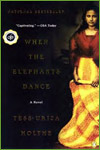
|
Holthe, Tess Uriza. When the Elephants Dance. (Penguin, 2003) An extraordinary novel set in the Philipine Islands on during World War II. A family, hiding in the cellar, tell each other stories while they wait out the terror of the invasions of war, Boccaccio fashion. The stories encompass the wealth of human crisis, from love, survival, and family, to the jumble of historical forces, the Catholic church, colonialism, and the diverse cultures of the Phillipines. (Midori Snyder) |

|
Hopkinson, Nalo. Skin Folk. (Warner Aspect, 2001) This is a splendid collection of Interstitial stories from a Caribbean writer who now makes her home in Canada. Hopkinson borrows tropes from fantasy, science fiction, horror, realism, magical realism, and Caribbean folklore. (Terri Windling) |

|
Joyce, Graham. The Facts of Life. (Atria, 2003) This extraordinary English novels dwells in the interstices between mainstream fiction, historical fiction, dark fantasy, and suspense. It's a beautifully written, atmospheric, insightful story about seven sisters in Coventry during and after World War II. (Terri Windling) |

|
Kessel, John. Mark L. Van Name, Richard Butner, eds. Intersections: The Sycamore Hill Anthology. (Tor, 1995) Well before Conjunctions 39 or McSweeney's, the Intersections anthology presented some of the premiere interstitial sf and fantasy writers working today. What further sets it apart from most anthologies is the afterword written by each author about each story, discussing how it was workshopped, critiqued, and/or revised, offering a glimpse into the creative process itself. (Gregory Frost) |
|
Knox, Elizabeth. The Vintner's Luck. (Farrar, Straus & Giroux, 1998) An exquisitely written historical novel set in 19th century France among the vineyards of Burgundy, except wait a minute there's this angel who comes to visit the protagonist every year, and a subplot involving sexual desires so queer there aren't even any names for them, and lots about how you make wine. (Ellen Kushner) |
|

|
Knox, Elizabeth. Billie's Kiss. (Ballantine Books, 2002) Is it a romance? a mystery? an homage to 19th century gothics with a whiff of Robert Louis Stevenson — with a severely dyslexic heroine and a borderline autistic villain? Yes. (Ellen Kushner) |
|
Larson, Jeanne. Bronze Mirror. (Holt, 1991) A novel of ancient China written by a professional Sinologist. Multiple narratives, some of which take place on earth and some in the courts of the Jade Emperor of Heaven, braided together with scholarly meditations on foot-binding and concubinage and fate. A book that wears its learning lightly, and is as funny as it is enthralling. (Delia Sherman) |
|
|
Lethem, Jonathan. As She Climbed Across the Table. (Doubleday, 1997) Lethem effortlessly mixes genres in this novel of academic manners, Science Fiction, comedy, and Physics. Where else could one find two hapless professors groping for love, a black hole named "Lack" that selects what it chooses to keep and chooses to release on the table, and an alternative world of science, the university and love? (Midori Snyder) |
|

|
Levandoski, Rob. Fresh Eggs. (Plume, 2003) This is a rural American novel, a satire, and a contemporary fantasy that manages to be ironic and warm-hearted at the same time. It's the story an Ohio chicken farmer and his daughter, a girl who mysteriously starts to sprout feathers. Levandoski uses this premise to explore modern farming, the corporate food business, and life in modern America - but most of all to tell a moving tale about fathers and daughters. (Terri Windling) |
|
McKillip, Patricia A. Stepping from the Shadows. (Atheneum, 1982; Out of Print) Wandering the realm between domestic realism, contemporary fantasy, and Young Adult coming-of-age fiction, this is the story of a young American writer haunted by the mysteries of her past, her present, and her future. (Terri Windling) |
|
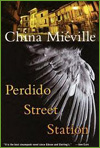
|
Miéville, China. Perdido Street Station. (Del Rey, 2003) This novel (set among soldiers, artists, magicians, mutants, and junkies in the magical city of New Crobuzon) borrows tropes from urban fantasy, science fiction, and noir suspense, with a dash of Mervyn Peake-style imagery, a pinch of Borgesian surrealism. (Terri Windling) |
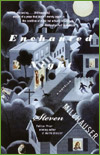
|
Millhauser, Steven. Enchanted Night. (Vintage, 2000) This slim but powerful volume, written as a series of luminous vignettes, drifts gently over many borders in its use of myths, dreams, and the Pied Piper theme to tell the story of one enchanted night in a small Connecticut town. (Terri Windling) |
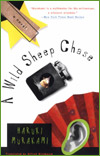
|
Murakami, Haruki. A Wild Sheep Chase. (Kodansha International, 1989/Vintage 2002) PW called it "a mock-hardboiled mystery, a metaphysical speculation and an ironic first-person account of an impossible quest" and "a postmodern detective novel in which dreams, hallucinations and a wild imagination are more important than actual clues." (Terri Windling) |
|
Ryman, Geoff. Unconquered Countries: Four Novellas. (St. Martin's Press, 1994) Four marvelous novellas from British writer Ryman show what it means to be interstitial. "A Fall of Angels" is an examination of entropy. "Fan" explores the relationship between media idols and their fans in a way you've never seen before. "O Happy Day" makes chilling use of a fascist concentration camp to spin our notions of sexuality. And "Unconquered Country" serves up a disturbing future China where people can give birth to machinery, and locations and devices are alive and thinking. (Gregory Frost) |
|

|
Sherrill, Steven. The Minotaur Takes a Cigarette Break. (John F. Blair Publishing, 2000) After years of wandering, the Minotaur — Theseus' Minotaur, not as dead as he was rumored to be — ends up in a small midwestern town, where he washes dishes at a greasy spoon restaurant. He's big, he's slow, he's inarticulate, but basically, he's just a regular guy. This is not, however, just a regular novel. It's spare and romantic and moving and utterly convincing. (Delia Sherman) |
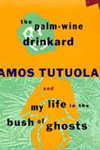
|
Tutola, Amos. The Palm Wine Drunkard, and My Life in the Bush of Ghosts. (Grove Press, 1980) Grove/Atlantic, Inc. has put both books out in one volume. Tutuola weaves bizarre surrealistic tales derived from Yoruba folktales; but he isn't just retelling tales, he's blending them into his own fantastic landscape in a way that pulls together the native and colonial essences of Africa into something new – something "meta-colonial". (Gregory Frost) |
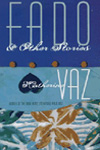
|
Vaz, Katherine. Fado & Other Stories. (University of Pittsburgh Press, 1997) Vaz criss-crosses the borders between many genres—realism, surrealism, horror, historical fiction and magical realism, to name just a few. (Terri Windling) |
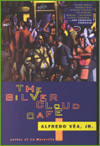
|
Vea Jr., Alfredo. The Silver Cloud Café. (Plume, 1997) In this fine novel, Vea weaves elements of magical realism, mysticism, and historical fiction into a hard-boiled murder mystery. Reaching from the Mexican Revolution to the present day, The Silver Cloud Cafe explores the lives of immigrants in San Francisco. (Terri Windling) |
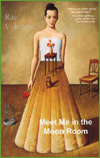
|
Vukcevich, Ray. Meet Me in the Moon Room. (Small Beer Press, 2001) Ray Vukcevich is just not like anybody you've read. This is a meticulous writer who recognizes no borders, no genres, whose fiction just goes where it needs to, not merely in terms of subject matter, but in voice, approach, style. There are people whose illness causes them to grow spacesuts and float away; and baby diapers fill with things not dreamt of in your philosophy; and dead lovers meet in theme park rides. (Gregory Frost) |
|
Waldrop, Howard. A Dozen Tough Jobs. (Mark V. Zeising, 1989; Out of Print) So you take the labors of Hercules, and you wind them up as tight as they'll go and drop them onto a Mississppi landscape circa 1920, propel them through the characters of the powerful Boss Eustis and to two of his all-but-indentured workers, I.O. Lace and Houlka Lee, and you have a book that's a fantasy, a mythological redoubling as much as a retelling, and an overview of harsh life in Mississippi in the 1920s. (Gregory Frost) |
|
|
Whitehead, Colin. The Intuitionist. (Anchor, 1999) This fabulously interstitial novel takes place in an unnamed, high-rise city much like Manhattan (with 19th-century, 20th-century, and near-future elements). In the guise of a stylish noir thriller/near-future murder mystery, the author skewers race and gender issues, riffs on history past and present, and all the while tells a damn good tale. (Terri Windling) |

